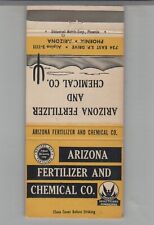
Adding nitrogen fertilizer is believed to benefit the soil by building organic carbon, but University of Illinois soil scientists have overturned this central tenet of the agricultural revolution. Their findings, published in theJournal of Environmental Quality, are based on analyses of soil samples from the Morrow Plots – America’s oldest experimental field – that date back to before the current practice of fertilization began.
“It is truly fortunate that researchers over the past 100 years have been diligent in collecting and storing samples from the U of I Morrow Plots in order to check how management practices have affected soil properties,” said researcher Saeed Khan. “We were intrigued that corn growth and yields had been about 20 percent lower during the past 50 years for the north [continuous corn] than for the south [corn-oats-hay] end of the Morrow Plots, despite considerably greater inputs of fertilizer nitrogen and residues.”
Co-researcher Richard Mulvaney says that the findings have troubling implications for corn production due to the widespread use of yield-based nitrogen recommendations since the 1970s. “The one-size-fits-all approach was intended to minimize the risk of nitrogen deficiency as insurance for high yields. Unfortunately, the usual result is over-fertilization because of the assumption that the fertilizer supplies more nitrogen than the soil. The opposite is true in most cases, and especially for the highly productive soils of the Corn Belt that receive the highest nitrogen rates.” Interestingly, the researchers said that yield rates have been progressively inflated over the years by increases from agricultural advances such as better varieties and higher populations.
The loss of soil carbon has many adverse consequences for productivity, one of which is to decrease water storage. There are also adverse implications for air and water quality, since carbon dioxide will be released into the air, while excessive nitrogen contributes to nitrate pollution. Because soils differ in their capacities to supply nitrogen, Khan and his colleagues stress the need for soil testing, ideally on a site-specific basis, as a prerequisite to soil-based nitrogen management that optimizes fertilizer rates.
Related articles:
Down On The Farm? Yields, Nutrients And Soil Quality
Study Slams Mainstream Farming Techniques
Can Biodiverse Farming Feed The World?
Food, Notorious Food
Increasing Soil Erosion Threatens World’s Food Supply

















Comments are closed.